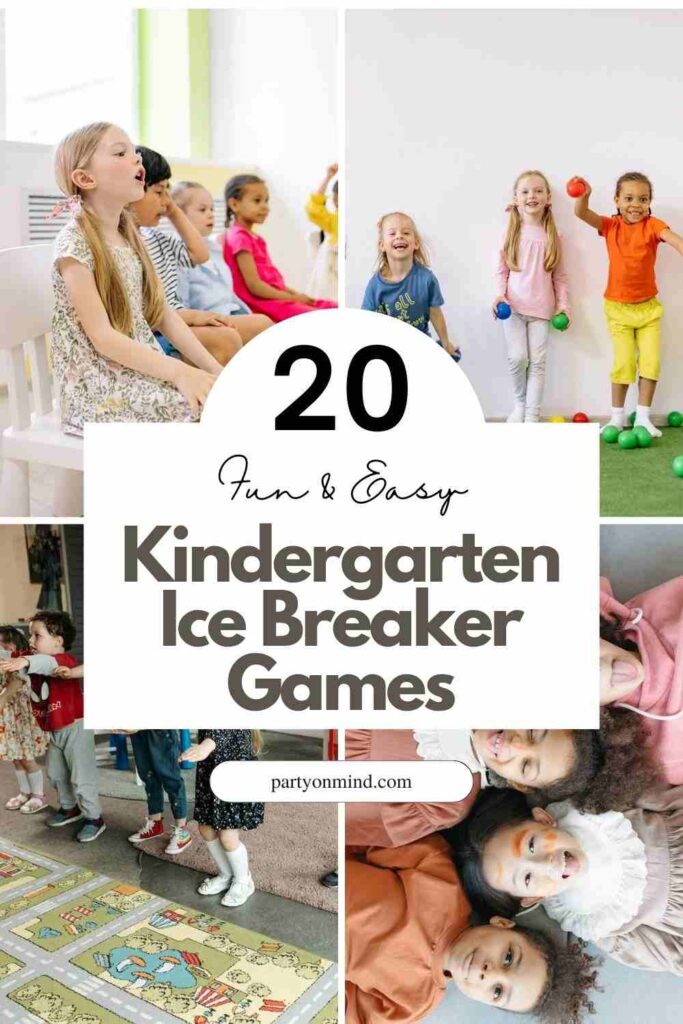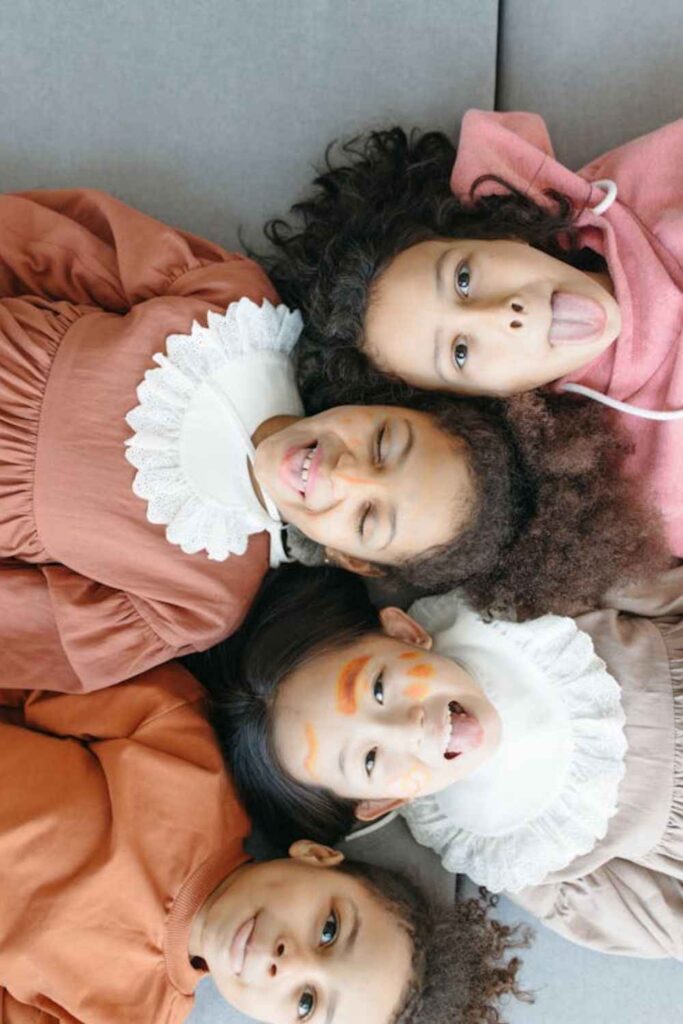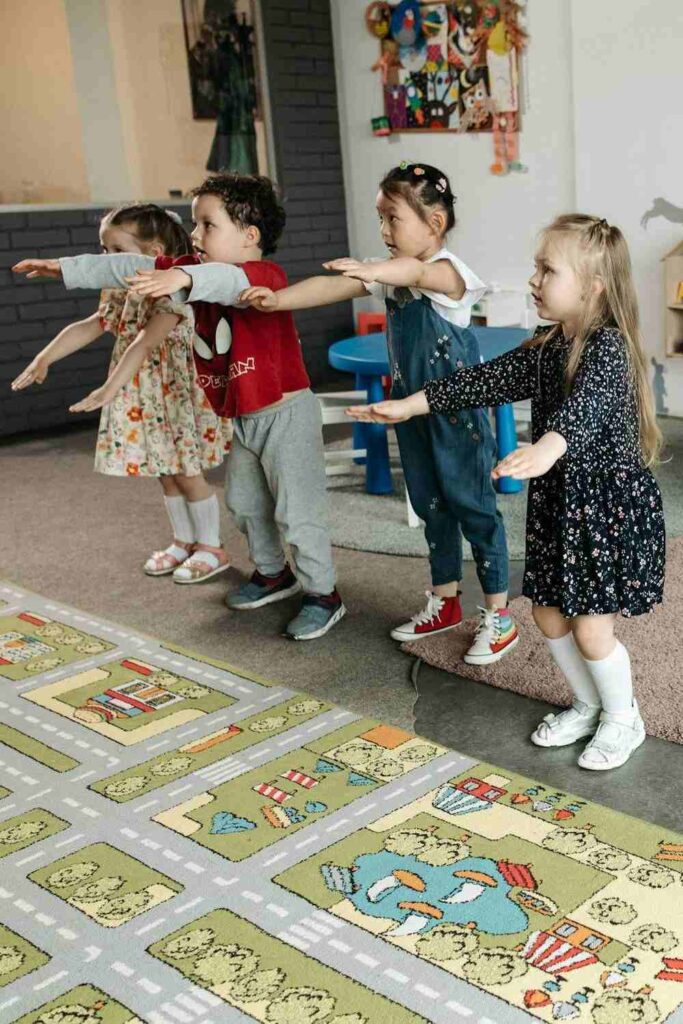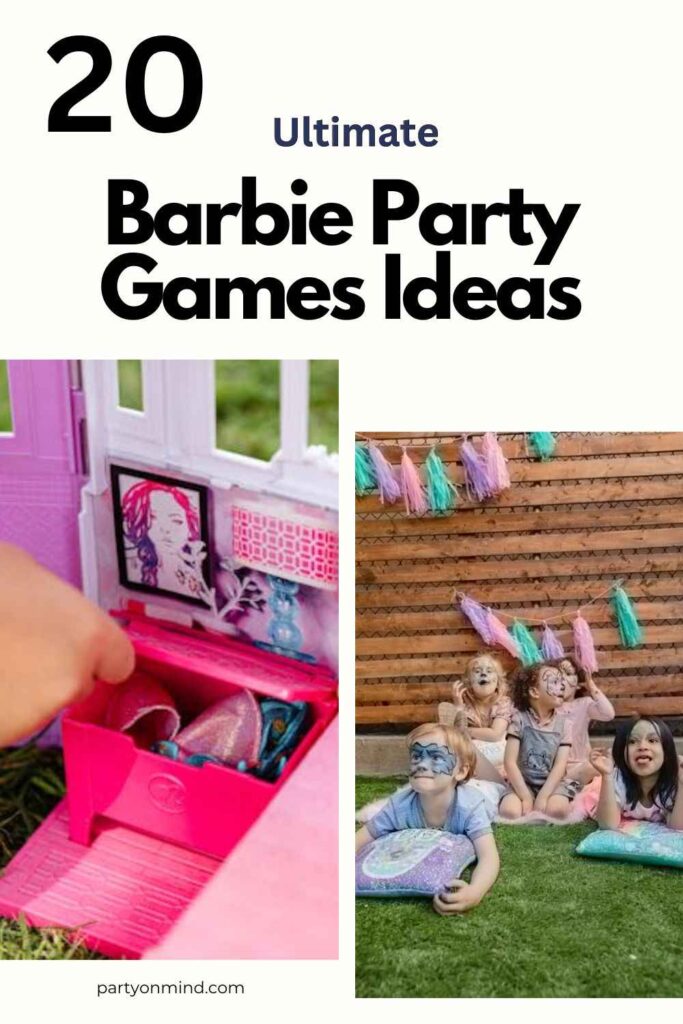Hi, I’m Emma, and I’m excited to share some fun and helpful Kindergarten Ice Breaker Games that can make a big difference in those first few days of school. Starting kindergarten is a big step for little ones, and ice breaker games are a great way to help kids feel comfortable, build friendships, and encourage participation right from the beginning. These games create a warm, welcoming environment where children can laugh, move, and connect with each other in simple, playful ways.
Kindergarten Ice Breaker Games
Kindergarten Ice Breaker Games are fun and simple activities that help young children feel welcome and connected. These games encourage smiles, friendships, and confident participation from the very first day.
Name and Action Game
This fun game helps kids learn each other’s names in a playful and memorable way. Each child says their name along with a silly action, like clapping, jumping, or spinning. Everyone repeats the name and action together, creating laughs and bonding. It’s great for memory and movement!
-
Encourage unique actions to keep it fun
-
Go in a circle so every child gets a turn
-
Repeat a few names after each new one to help memory
-
Start with your own name as an example
-
Applaud each child to boost confidence
Follow the Leader
This classic game lets kids take turns being the leader while others copy their movements. It helps build confidence, encourages creativity, and gets kids moving. The leader can march, hop, wiggle, or pretend to be animals. It’s silly, active, and always a hit!
View this post on Instagram
-
Keep the pace slow for younger children
-
Use music to add excitement
-
Rotate leaders quickly to keep everyone engaged
-
Encourage leaders to choose safe and gentle moves
-
Let teachers join in to model the fun
Find a Friend Who…
This simple game encourages kids to find classmates with things in common. You give prompts like “Find a friend who likes ice cream” or “Find a friend who has a pet.” It gets kids talking, moving, and discovering new friendships through shared likes.
-
Use clear and simple questions
-
Repeat prompts if needed for shy children
-
Help pair up kids if someone feels left out
-
Demonstrate how to ask and answer politely
-
Praise kids for speaking up and making connections
Pass the Smile
A quiet but sweet circle game that spreads kindness. One child smiles at another, who then “passes the smile” to the next, and so on. It’s a gentle way to build trust and comfort in a new classroom. Plus, smiling is contagious in the best way!
-
Sit in a circle so everyone can see
-
Remind kids to make eye contact when passing the smile
-
Encourage giggles and joy, but keep it calm
-
Let shy kids join in at their own pace
-
Try a version with silly faces for extra fun
Color Corners
Assign each corner of the room a color. Call out questions like “Go to your favorite color!” or “Go to the color you think of when you’re happy.” Kids choose their corner and then meet others who made the same choice. It’s active, visual, and helps with decision-making.
-
Use bright signs or balloons for each corner
-
Keep questions light and fun
-
Encourage chatting once they reach their color
-
Mix it up by letting a child call out the next question
-
Play calming music in the background for smooth transitions
Show and Tell Buddy
Pair kids up and have them share something about themselves, like a favorite toy, food, or color. Then each buddy introduces their friend to the class. This builds listening skills and helps even shy kids speak through a partner.
-
Model how to ask and answer questions kindly
-
Give kids time to think before sharing
-
Use picture prompts for younger kids
-
Sit pairs close together to reduce distractions
-
Clap after each buddy shares to show appreciation
Animal Walks
Let kids move around the room pretending to be different animals—hopping like a bunny, crawling like a bear, or flying like a bird. It’s a playful way to get the wiggles out and let creativity shine while helping kids feel comfortable.
-
Call out animal names one at a time
-
Keep the movement space safe and clear
-
Encourage soft landings and gentle motions
-
Let kids suggest new animals
-
Use fun music or animal sounds for extra excitement
The Compliment Circle
In a seated circle, each child says something nice about the person next to them. This promotes kindness, helps build vocabulary, and makes everyone feel special. It’s perfect for a calm moment during the day.
-
Help kids think of simple compliments (“You’re funny” or “I like your shirt”)
-
Give examples before starting
-
Keep the tone light and positive
-
Allow children to pass if they feel shy
-
Celebrate each compliment with a smile or cheer
Draw and Share
Give kids a few minutes to draw something about themselves—like their family, favorite food, or pet. Then let them share their drawing with the group or in small groups. This is a great ice breaker for quieter kids who love art.
View this post on Instagram
-
Provide crayons, markers, and paper
-
Set a short timer to keep things moving
-
Help kids describe their drawing if needed
-
Display artwork around the classroom afterward
-
Praise all efforts—no artistic skills required!
Name Ball Toss
Stand in a circle and toss a soft ball from one child to another. The child says their name before tossing it to the next. It’s fast-paced, helps with name learning, and brings giggles with each toss.
-
Use a lightweight ball or plush toy
-
Encourage clear voices and eye contact
-
Keep the group small at first
-
Remind kids to toss gently
-
Add a second ball for a fun challenge once everyone’s ready
What’s in the Bag?
Place a mystery object in a small bag and have kids feel it (without looking) and guess what it is. This sensory game is fun, surprising, and helps kids get curious and talkative.
-
Use safe, familiar items like a toy car or crayon
-
Let kids take turns and speak their guesses
-
Give small hints if needed
-
Celebrate each guess with excitement
-
Let kids take a turn hiding the object
Musical Freeze
Play music and let kids dance freely. When the music stops, they must freeze like a statue! It’s an exciting way to break the ice and get moving with laughter and listening practice.
-
Choose fun, kid-friendly music
-
Remind kids to freeze safely (no falling)
-
Change up freeze poses for variety
-
Compliment silly or creative dance moves
-
Keep rounds short and high-energy
All About Me Posters
Give each child a simple poster to fill out with drawings or photos about their favorite things. Hang them up and let kids walk around to learn about each other. It’s a visual way to connect and celebrate everyone.
-
Use simple templates with pictures and prompts
-
Allow extra time over a few days
-
Encourage parents to help at home
-
Display them proudly in the classroom
-
Invite kids to talk about their posters if they want
Guess Who?
Ask fun questions like, “Who loves pizza?” or “Who has a pet?” and kids raise their hands if it applies. It’s a quiet but exciting way to find out fun facts and discover common interests.
-
Keep questions light and age-appropriate
-
Let kids suggest questions too
-
Use visuals for extra clarity
-
Mix sitting and standing to keep attention
-
Praise honest answers to build trust
The Mirror Game
Pair kids up and have one child act as the “leader” while the other copies their movements like a mirror. Then switch roles. This game builds focus, coordination, and connection through gentle movement.
-
Model how to move slowly and clearly
-
Encourage gentle, calm actions
-
Switch partners after a few rounds
-
Play soft music for a relaxed mood
-
Let everyone take a turn being the leader
Tips for Success
Kindergarten ice breaker games are most effective when they’re supported by a warm, encouraging environment. Young children are still learning how to express themselves and connect with others, so it’s important to guide them gently and joyfully. With a little patience and a lot of positivity, these games can truly transform the classroom atmosphere.
-
Use lots of encouragement and praise
Cheer on every effort, whether it’s a child saying their name out loud or participating in a group activity. Positive reinforcement helps build confidence and makes kids feel safe to join in. -
Help shy kids by pairing them with a buddy
Some children may feel overwhelmed in group settings. Gently partner them with a friendly or outgoing classmate to help ease them into the activity. -
Keep the mood light, silly, and playful
Laughter and play break down walls faster than anything else. Embrace the silliness—it makes the experience more fun and helps kids bond naturally. -
Repeat games during the week to build familiarity
Repetition helps young children feel more comfortable. Playing the same game a few times allows them to participate more fully each round as they gain confidence.
FAQ
What are Kindergarten Ice Breaker Games?
Kindergarten Ice Breaker Games are fun, simple activities designed to help young children feel comfortable in a new environment, build friendships, and encourage participation. These games are typically easy to understand, short in duration, and filled with energy to keep kids engaged.
Why are Ice Breaker Games important for Kindergarten?
Ice breaker games are crucial in kindergarten because they help children adjust to new settings, ease first-day jitters, and create a sense of community. These activities also support social development, encourage communication, and allow kids to interact with their peers in a fun, non-intimidating way.
How do I keep ice breaker games suitable for young kids?
When planning ice breaker games for kindergarten, keep the activities simple, safe, and age-appropriate. Choose games that are easy to understand, involve minimal equipment, and require little to no reading or writing. Focus on movement, creativity, and playfulness to match the energy and attention span of young children.
How long should each ice breaker game last?
Kindergarten children have shorter attention spans, so it’s important to keep each game around 5–10 minutes. Quick, engaging activities will help maintain their interest and energy levels without feeling overwhelming or tiring.

I’m Emma Rosenthal, an event planner based in New York City with a passion for bringing people together through unforgettable celebrations. I created partyonmind.com to share my best party ideas, wedding inspirations, and fun games for kids, adults, and everyone in between. Whether you’re planning a small gathering or a grand event, I love helping you make every occasion special with creative and engaging activities. Let’s make every party one to remember!
![Fun Party Games Ideas for Kids, Adults [Party On Mind]](https://partyonmind.com/wp-content/uploads/2025/02/on-1-316x90.png)



